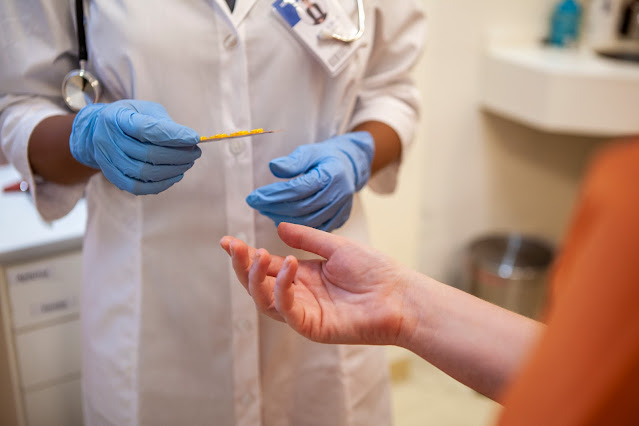By David H. Gustafson, PhD, Director, Center for Health Enhancement Systems Studies, and Maureen Fitzgerald, Communications Manager, Great Lakes ATTC, MHTTC, and PTTC
Update: In Memoriam
It is with deep sadness that we acknowledge the passing of Don Holloway,
who made significant contributions to the NIATx model.
Learn
more about Don’s legacy.
Dave Gustafson
Dave Gustafson directs the University of Wisconsin−Madison’s Center for Health Enhancement Systems Studies, which includes the Great Lakes ATTC, MHTTC, PTTC, NIATx, and several research projects that focus on using systems engineering tools to support sustainable individual and organizational improvement. His individual and systems change research develops and tests technology to help people deal with issues affecting quality of life, including addiction, cancer, and aging.
In this post, Dave reflects on the enduring impact of the NIATx model.
When NIATx launched in 2003, did you envision it
expanding and continuing to grow 20 years later?
"No, it was not a long-term view at all. The Robert Wood Johnson Foundation (RWJF) was interested in whether systems engineering could help in the addiction space. Victor Capoccia, a project officer with RWJF, contacted me and asked if I wanted to run a national program focused on improving addiction treatment. I knew nothing about addiction treatment, so I played the role of someone with an SUD and tried to get myself admitted for treatment in a couple of places. I wanted to make sure that the program we set up with RWJF would make a difference. Our vision was very short-term — what we could do in the 3 or 4 years of the funding period. We did not expect the project to have an extended life beyond the initial funding in 2003.”
What was something that surprised you in the NIATx
evolution?
“The biggest surprise was recognizing how little I knew about what it
takes for your work to have a broad impact. Victor Capoccia was always thinking
about NIATx at a much broader level and set the direction for us. He'd call me
and say, "OK, I've set up a meeting with Congress so we can talk about
this," or, "I think we can hold a national conference."
Other things came up, but I wouldn’t refer to them as surprises—more
like accidental discoveries. Some of the changes we made came about just from
conversations. One that stands out is a conversation I had with Dean Lea, one
of our NIATx coaches for the first project. Dean and I were driving back from a
visit to a treatment center in Maine that Lynn Madden (a current NIATx coach)
was directing. We’d been looking at appointment books from a lot of agencies
and could see from the packed schedules that there was no room for new patients.
But we could also see how many appointments were canceled or no-shows. While
the field as a whole was saying they could not meet demand, agencies often had
35% unused space. Dean said, "I don't know why people even bother to
schedule appointments because nobody shows up.”
So, we went back to Lynn and talked about not scheduling appointments.
This turned into trying out the idea of (what Lynn called) on-demand
appointments. That solution just took off. So that's one solution we came up
with by accident, not planning. 51% of innovations come up by accident, not by
planning. It was an Aha! moment that made a tremendous difference in treatment
access. As Einstein said, "If we knew what we were doing, it wouldn't be
research." It’s the stumbling along that brings about great ideas.”
What do you think has contributed to NIATx
expansion?
“Many things contributed to NIATx expansion. A top factor was staying
focused on our original four aims: reducing waiting time, reducing no-shows,
increasing admissions, and increasing continuation. Don Holloway, who was part
of the team that launched NIATx, told me to really drive that message whenever
I got in front of a group to talk about what NIATx was and was not. Staying
focused on just those four aims (and
nothing else) at a time made the change projects manageable for our providers
versus feeling overwhelmed by the idea of having to overhaul their systems
completely. Maintaining that single focus was important.
I also think that the simplicity of the NIATx change model is what makes
it so powerful. We told providers that they only had to follow five principles—not 10 or
15—and that they only had to try a change for a very short time. If it worked,
great. But if didn’t, then stop and try something else. The idea was to keep
NIATx simple and fast-moving enough so people could easily adopt it.
Another factor in our success was the doors that Victor Capoccia and
Fran Cotter from SAMHSA opened
and their commitment to the project. SAMHSA-funded projects led from a focus on
individual treatment agencies to the role of state agencies and the tremendous
impact they can have on treatment delivery.
I would add research
as another factor contributing to the NIATx trajectory, with work by Todd
Molfenter, Jay Ford, and others helping drive widespread implementation and
testing in new spaces. Plus, the NIATx Change Leader Academy (CLA) that we
launched in 2006 has played a huge role in dissemination efforts and has
trained hundreds nationwide. Mat Roosa and Scott Gatzke continue to refine the
CLA to respond to the field’s evolving needs, including work with Alfredo Cerrato on applying NIATx
tools to foster cultural responsiveness. That’s really exciting.
And then, the stories. How many times have I told the story of creating
a persona of someone with a heroin addiction and then trying to get my persona admitted
for treatment? How I was told to call back for seven weeks in a row to find out
if a bed was available when my persona was ready for (and needed) treatment
that day! While the science is there, it’s anemic compared to a great story.
And, of course, the ATTC/NIATx Service Improvement Blog has been a great way
for sharing these stories over the past decade.”
Are you using NIATx tools in your current research?
“The NIATx approach is embedded in the way I think about
things and continue to integrate into everything I do. One project that’s been
a great interest of mine for some time is the idea of automating addiction
treatment, or in other words, finding ways to explore how technology, and that
includes AI, can play a role in prevention, treatment, and recovery. The NIATx
model of rapid cycle improvement is playing a fundamental role in that effort
right now.”
What aspects of your current research are you most
excited about?
“One of our current initiatives involves weekly Zoom meetups
with around 60 older adults. We kick things off by having participants break
into small groups to share something positive or challenging that’s happened in
the previous week. We spend the initial 10 minutes in open conversation, then
shift gears—assigning someone to lead a discussion on a weekly theme. It could
be something as straightforward as dietary choices for older adults, a shared
concern for everyone. Then, a member of our research team will give a brief but
informative lecture on the topic, followed by a wrap-up 30-minute discussion
where everyone pitches in with their thoughts. Towards the end, we summarize
the key takeaways and wrap up with a movement exercise.
The impact has been astounding. I initially thought the idea
of bringing people together on Zoom was good, but it turns out it's a great
idea! I've never experienced such a profound response before. People are
emotionally moved, and some have even teared up when they learn that the
intervention is coming to an end. That leads us to ask what the next step is.
What's the message here, and where is this taking us? It's been a powerful
journey, and the participants' emotional response speaks volumes about this project's
impact.”





.jpg)






